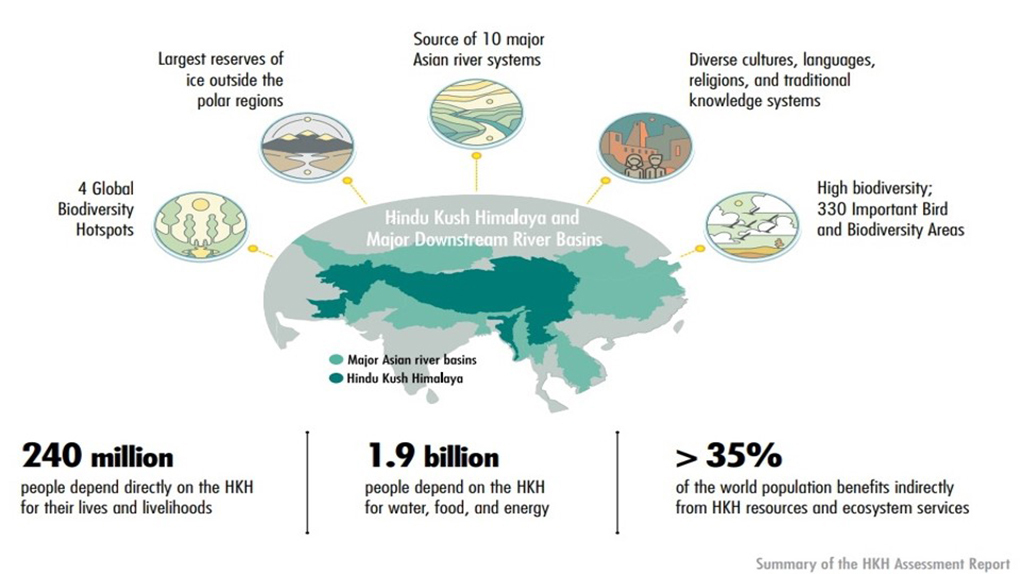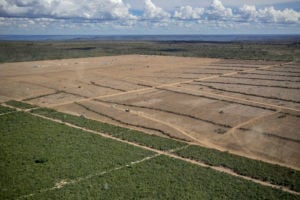The world is experiencing an unprecedented loss of biodiversity, with an average decline of 68% in wildlife populations since 1970 and one million species at risk of extinction. This loss is incalculable and irreplaceable. It threatens the existence of humanity. The Covid-19 pandemic has reminded us of the increased risks of zoonotic and other emerging diseases due to biodiversity loss and habitat degradation.
Amid the pandemic, the world is preparing for the UN Conference of Parties to the Convention on Biological Diversity (CBD COP15) in 2021. Global leaders will reflect on the Strategic Plan for Biodiversity (2011-2020) agreed upon in 2010.
The 2010 UN biodiversity summit was held in Aichi prefecture, Japan, and governments agreed 20 specific ‘Aichi targets’ to improve biodiversity by 2020. The recently published Global Biodiversity Outlook 5 indicates that 14 out of the 20 targets were missed and six were partially achieved.
Tracking biodiversity targets in the Hindu Kush Himalayas
It is now imperative to reflect on the state of biodiversity and its contributions to human wellbeing and economic development, particularly in and around the Hindu Kush Himalayas (HKH), a region extremely rich in biological and cultural diversity, with a large population directly dependent on ecosystem goods and services

The region contains 1,106 Important Bird Areas (IBAs), covering about 11% of its total area. About 32% of the HKH is covered by four global biodiversity hotspots: Himalaya Hotspot, Indo-Burma Hotspot, Mountains of Southwest China and Mountains of Central Asia. Similarly, about 64% of the HKH is covered by the Global 200 ecoregions. These diverse ecosystems support more than 81,000 species of plants and 15,623 species of animals at last count. This biodiversity is also the lifeline for 240 million people living within the HKH and 1.65 billion in the river valleys downstream.
As yet, there is no specific analysis on the extent to which the Aichi targets have been met in the HKH region. However, the analysis of target 11, which calls for the conservation of “at least 17% of terrestrial and inland water areas, especially areas of particular importance for biodiversity and ecosystem services, through effectively and equitably managed, ecologically representative and well-connected systems of protected areas and other effective area-based conservation measures” is encouraging in the HKH.
For instance, Bhutan with 51.44% and Nepal with 23.39% of their area under the protected area network exceed the Aichi target of 17%. However, other countries in the region need to take concrete steps to meet the Aichi targets. Worryingly, HKH-level analyses through the Himalayan Monitoring and Assessment Programme revealed that populations are still declining for over 50% of the region’s threatened species.
Looming threats to the region
The HKH is being impacted by climate change, land use and land cover change, overexploitation of natural resources, habitat loss and fragmentation, invasive alien species, rapid urbanisation and pollution.
Climate change and land use and land cover change are the leading causes of biodiversity loss and ecosystem degradation in the region.
In addition, human-wildlife conflict has increased over the years, mainly due to the expansion of agriculture and human settlements into wildlife habitats. This has also led to poaching and retaliatory killing of wildlife.
All this has worsened during the Covid-19 pandemic, partly because wildlife entry into settlements increased due to limited human movement, and partly because anti-poaching measures are suffering due to restrictions on movement.
Balancing conservation and human needs
The Hindu Kush Himalayas is a region of rich ecosystems, abundant natural resources and poor people. Some 70-85% of rural people in the region are directly dependent on biodiversity and derived ecosystem services.
But with biodiversity losing ground in the quest for rapid development, balancing conservation and human wellbeing is a challenge in the HKH. In addition, increased climate variability and extreme weather events threaten to undermine conservation and development efforts. The region continues to grapple with the challenges of limited access to climate information and support services, as well as low adaptive capacity, making adaptation planning a herculean task.
During the Covid-19 pandemic, the region has experienced a large inflow of returnee migrant workers, putting more pressure on biodiversity resources. Meeting the livelihood needs and increased food demand is a challenge, and could result in over-harvesting of biodiversity resources and loss of biodiversity in the region.
See: Could the Himalayas harbour the next pandemic?
Regional cooperation the way forward
The drivers of change impacting the region are not limited to individual countries. The region needs more coordinated efforts and cooperation than ever before to halt the ongoing biodiversity crisis and enhance human wellbeing.
This can be achieved through greater investment in nature-based solutions, increasing the area under protection for biodiversity and ecosystem services through ecologically representative and well-connected protected area systems, and effectively and equitably managed transboundary landscapes. These measures will increase socio-ecological resilience to the diverse challenges, including climate change, in the region.
See: Eight Hindu Kush Himalayan countries issue a united call
Effective management of human-wildlife conflict also calls for a regional policy to compensate rural residents for the loss of lives and crops. Governments need to combine advances in technology with traditional practices to improve conservation and encourage the sharing and replication of good practices.
It is important for the conservation community to invest in long-term research to understand the dynamics of this fragile region through multidisciplinary and transdisciplinary studies. There is a need to build institutional capacity and links between HKH member countries through greater cooperation and collaboration in science, policy and practice.
The recent declaration and endorsement of the HKH Call to Action at the Ministerial Mountain Summit 2020 could be a good start for greater regional science-policy cooperation in general and to meet the Aichi targets in particular.








